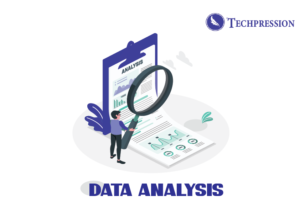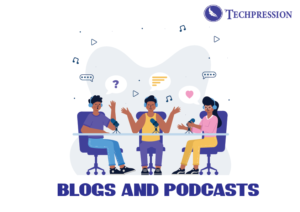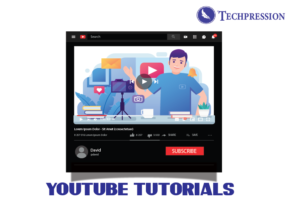In the new year 2024, It is important to move with the tides and to ensure that both the skills and the confidence to stay ahead in your career are acquired. Obtaining the essential skills required to get ahead in your career can be expensive. We know and you don’t need to be discouraged.
It is as a result of that, that we at Techpression have put together some pocket-friendly tech skills in 2024 for the aspiring tech professionals.
Read also: How I started my career as a Product Designer – Akinmoladun Falusi
Data Analysis
Data is becoming increasingly important to businesses of all sizes, and data scientists are in high demand to help companies collect, analyse, and interpret their data. Data scientists use their skills to identify trends, make predictions, and develop solutions to complex problems.
Data analysts and data visualisation specialists also play essential roles in helping businesses to make sense of their data. Data analysts use their skills to clean, analyse, and report on data. In contrast, data visualisation specialists use their skills to create charts, graphs, and other visual representations of data that make it easy to understand and interpret.
Learning programming languages like Python and R, data visualisation tools like Tableau or Power BI, and statistical analysis techniques will make you a valuable asset in any data-driven industry.
Data analytics may seem like a tech playground for the wealthy, but aspiring data wizards can enter this lucrative field without breaking the bank. Let’s explore the fantastic world of free learning resources and budget-friendly certifications that can teach you data analysis.
Free Learning Feast: Data-Feeding Options

Massive Open Online Courses (MOOCs):
Coursera, edX, and Udacity provide many free data analytics courses. Learn foundational skills like Python programming, statistical analysis, and data visualisation from top universities and tech giants.
YouTube Tutorials:
Dive into bite-sized learning! Channels like Sentdex, Analytics Vidhya, and Krish Naik offer comprehensive breakdowns of various data analysis techniques, software tools, and real-world case studies.
Open-source software: Use free! Data analysts employ open-source solid technologies like Apache Spark, R, and Jupyter Notebook. Learn data manipulation and visualisation by doing.
Blogs and Podcasts: Follow data-focused blogs like O’Reilly Radar and Fast Forward Labs to follow industry trends and best practices. DataFramed and Planet Money explore data analysis’s ethical and practical ramifications.
Certification Gems: Affordable Validation for Your Skills
While free learning is invaluable, credible certifications can give your resume a competitive edge. Here are some budget-friendly options:
Massive platforms: Coursera, edX, and Udacity offer free courses & sometimes certificates upon completion (check course specifics).
Google & co.: The Google Data Analytics Professional Certificate on Coursera is affordable, and the IBM Professional Certificate in Data Science on edX is budget-friendly.
Exams with a budget: Exceed Exams Data Analyst Certification is self-paced and affordable, focusing on practical skills.
Remember that success requires consistent study and hands-on practice, not diplomas. Participate in online hackathons, construct personal projects using your new abilities, and network with data enthusiasts to push your limits.
You can achieve your data analytics goals on a budget with determination, resources, and creativity. So start your laptop, open your preferred learning platform, and prepare to conquer data!
Sites To Get Free Web Development Course With Certification
Several platforms are offering free web development courses along with certifications. One prominent choice is
Freecodecamp provides a comprehensive curriculum covering HTML, CSS, JavaScript, and various frameworks. Their interactive platform allows hands-on coding practice, and upon completion, you earn certifications recognized in the industry.
Codecademy: This is another excellent resource offering free coding courses. While their free tier provides fundamental lessons, they also have a paid option for more in-depth content. Nevertheless, you can gain valuable knowledge without spending a dime.
Mozilla Developer Network (MDN), is renowned for its detailed web development documentation. It’s a fantastic resource for learning, especially for those who prefer text-based learning. MDN’s “Learning Web Development” section is a great starting point.
W3Schools is a widely-used platform that provides free tutorials on web development technologies. While they offer certifications at a cost, the free content is extensive and can be a valuable learning resource.
For those interested in specific frameworks, React, Angular, and Vue.js have official documentation that serves as excellent learning material. These resources are comprehensive and free, allowing you to expand your knowledge of the popular JavaScript frameworks.
However, the internet is filled with free web development resources, and by combining courses from multiple platforms, along with hands-on projects, you can acquire a robust skill set without spending any money.
Become a Master Copywriter Without Going Bankrupt

The craft of creating compelling and interesting information that motivates readers to take action is known as copywriting. Anyone who wishes to make an impression with words, whether for business or personal reasons, should possess this important skill.
Here are some choices to consider if you want to learn copywriting for free or at a low cost and acquire a certification:
The free online course Copyblogger Copywriting 101 by Brian Clark goes over the fundamentals of copywriting, including calls to action and headlines. An expert in the field will teach you how to write copy that works for various platforms and objectives. Nevertheless, neither advanced copywriting themes nor a certification are offered by this course.
Learn how to write genuine, non-cheesy copy that connects with your audience with Skillshare’s free one-hour course, Copywriting for Beginners. You’ll discover how to steer clear of typical mistakes and cliches as well as how to engage readers with your writing through emotion and storytelling. This course does not focus on copywriting other than web copy or offer a certification.
This $497 premium course, AWAI’s Accelerated Program for Seven-Figure Copywriting, teaches you how to produce direct response copy that drives sales and conversions. Successful copywriters will teach you how to write for a variety of markets and niches, how to identify and comprehend your target audience, and how to maximise the effectiveness of your copy. If you complete the course and adhere to the program, you will receive a certification and be guaranteed financial success.
Though there are many more courses on websites like Coursera, Udemy, and edX, these are some of the greatest copywriting courses now offered online. Putting what you’ve learned into practice and getting feedback from others are the best ways to learn copywriting. Additionally, you can study and evaluate the copy produced by prosperous companies and copywriters to gain insight into their methods and approaches.
The Best Platforms for Cybersecurity Training and Certifications
Cybersecurity is now a thing. So if you are ready to dive into the world of cybersecurity, this is for you.
It’s like the digital world’s equivalent of learning to be a superhero – defending against cyber-villains and all. Let me break it down for you in a more casual way.
For free resources, you have some cool options. Coursera and edX are your go-to hangout spots. They’ve got courses from universities that are, frankly, kind of a big deal – think Harvard, MIT – and it’s all free!
Coursera is neat because you can preview the courses before deciding if you wanna pay for the full thing with certification.
Now, if you’re into something more hands-on, Cybrary should be your jam. It’s like being in a virtual lab where you can play around and learn real-world cybersecurity skills. It’s awesome for getting a feel of what cybersecurity work is actually like, and it won’t cost you anything.
Switching gears to certifications – Udemy is a cool place to check out. It’s like your neighbourhood store; it has a bit of everything. The courses are affordable, and they often have sales. If you’re aiming for specific certifications like CompTIA Security+ or Certified Ethical Hacker, Udemy’s your spot.
LinkedIn Learning is another sweet choice. It’s more like a subscription service, kind of like Netflix, but for learning. Once you complete a course, you get a badge right on your LinkedIn profile. It’s a slick way to show off your new skills to employers or clients.
So, whether you’re just starting to dip your toes in cybersecurity or you’re looking to level up, there are a bunch of paths you can take. It’s all about finding the one that suits your style and where you want to go. Keep it fun, and good luck on your journey to becoming a defender against cyber-villains.
Consider UX/UI Design
User experience (UX) and user interface (UI) are sometimes used interchangeably in web design despite their diverse meanings. Understanding these characteristics is essential for prospective designers to learn web development, build abilities, and enter UX/UI design.
What’s UX Design?
The user’s journey with a product or service is called user experience (UX). UX design involves branding, usability, function, and design to create meaningful user experiences.
Consider the full user journey when using a product or service when designing UX. Is the user exposed to the service or product by advertising, blogs, or something else? How do users interact with brands? How does the user feel following an interaction? These and other questions are crucial to UX design.
The main goal of a UX designer is for users to enjoy a product or service. Whether the encounter solves an issue, entertains, or informs, the user should feel satisfied.
What is UI Design
However, UI design pertains to user interfaces. UI design may feature buttons, widgets, text, photos, sliders, and other interactive elements. UI designers guarantee that every visual element, transition, and animation in a product or service creates a smooth, pleasurable experience.
The Essentials Between UX and UI Design
Due to their close collaboration, UX and UI designers are often confused, even though they focus on different aspects of a product or service. Both roles have considerable overlap, but there are also important variances.
UX and UI design are related but distinct product development professions. UI design includes a product’s visual and interactive features that enhance user experience. UX design considers the product’s overall feel and the elements that will provide users with a meaningful, relevant experience.
UX design abilities are in demand worldwide. The UX Design Institute reports that 70% of managers will expand their design teams in 2021. Those seeking to profit from this need should understand UX and UI design.
UX and UI designers are expected to earn above the national median. According to CareerOneStop, the median 2020 U.S. digital designer pay was above-average $77,200.
Additionally, employment market growth is predicted to be significant. The BLS predicts an 8% market growth for all digital designers by 2029, making the sector an attractive career choice for prospective designers.
What Skills Do UX/UI Designers Need?
UX and UI designers build and implement digital products and services, hence they need several abilities. Here are some talents new UX/UI designers need to succeed.
Wireframing/Prototyping
UX designers must be able to test app and service structure and functionality. Wireframes demonstrate how each interface part functions, not just how it looks. Designers can evaluate product or service functionality with prototypes before going into production.
Users’ Research
UX designers employ interviews, surveys, questionnaires, and focus groups to learn what people desire from a product or service. How to construct effective research tools can assist UX designers make data-driven product decisions. UX designers and researchers may share these duties, while some organisations separate them.
Visual Design
Most UX/UI designers work with visual design. Visual design is used by UI designers to construct websites, programs, and other features. UX designers employ design talents to create functioning prototypes. Visual design skills are essential for UX/UI beginners because design and usability go hand in hand.
Copywriting
Most products and services use copy. UX and UI designers need good copywriting to create successful user interactions.
Visual design and product usability depend on strong text. The copy’s tone of voice is part of a brand’s visual identity, making it essential to design.
Info Architecture
Websites, web and mobile apps, and other technologies use information architecture (IA) to organize and structure material. The goal of information architecture is to organize, categorize, and structure content. The purpose is to help users comprehend where they are, what they found, and what to expect from the service. IA-recommended practices are essential for UX/UI designers.
Becoming a UX/UI designer?
The three main UX/UI design education paths are boot camps, degrees, and self-guided.
UX/UI Bootcamps
Bootcamps can help you start a UX/UI design career quickly, but without hands-on experience, it can be hard. UX/UI boot camps can help you establish a portfolio by teaching you design, prototyping, and more. This is a terrific way to learn new skills and change careers, even if you’re working full-time.
Additionally, boot campers are in high demand. According to HackerRank’s 2020 developer skills index, one in three hiring managers had employed a boot camp participant. According to 72% of recruiting managers, boot camp graduates are equally or more prepared for the job.
Traditional Degrees
Traditional degrees are another wonderful UX/UI design resource. Traditional degree programs require two to four years of full-time study (or longer if you study part-time). Degrees allow students to study UX/UI concepts and other issues.
Self-Guided Options
UX/UI design basics can be learned from online classes, applications, and videos. For self-directed learning, these options are ideal.
UX/UI designers must consider accessibility and inclusivity. This website explains people-first design approaches that can make your designs more accessible.
User Experience Fundamentals
UX design is user experience. Simple, enjoyable products are designed using UX design. UX designers focus on ensuring each user gets value from a brand, product, or service by taking a high-level view of their journey.
Graphics Design and Video Editing

Before the recent technological innovations and before the days of the full impact of Artificial Intelligence, graphics design and video editing have remained relevant skills.
As the recent revolution in technology influences every sector, these skills have not been left out.
Graphics design and video editing are still viable skills to possess, and the current technological disruption has made being a graphic designer or video editor easier to attain.
This article will cover how to acquire these skills and how to earn from their implementation.
Skill acquisition
Graphics design: The conventional way of being a graphics designer involves the mastery of software like CorelDraw. This can be acquired by enrolling in a computing institute or from tutorials online. The learning process is in-depth and lengthened.
However, due to technological innovations, there are software and applications that have made this process a lot easier. You don’t have to know the in-depth techniques which require mastery of CorelDraw to produce graphics, nor do you need a laptop or a desktop computer. With apps like Canva and PixelLab, you can become a graphics designer in one day, at most, a week, creating high-quality graphics from your mobile phone.
Video editing: In the past, to become a video editor, you needed to own a laptop or a desktop computer and learn the complex implementation of video editing software like Adobe Premiere Pro or DaVinci Resolve. This could also take a minimum of three months for a fast learner to implement.
Thanks to technological advances, people are becoming video editors on their smartphones. Through efficient software like Capcut, Inshot, Kinemaster, PowerDirector, FilmoraGo, VivaVideo and Adobe Premiere Rush, you can become a video editor in under a week.
There are free tutorials on YouTube and courses on Udemy or Coursera to put you through.
Skill monetisation
The most important part of skill acquisition is the implementation to generate income.
You can earn from graphic design by rendering the following services:
Logo design
Flyer and banner design
Cover page design
Business card
Greeting card etc.
You can advance in this skill by becoming a UI/UX designer.
You can earn as a video editor by rendering the following services:
Creating video ads
Managing video-based social media platforms like TikTok and YouTube
Creating jingles
Covering events
Creating a video editor course based on your experience.
Contributors:
Olalere modupe, Ibukun Bankole , Hauwa Ali, Yemi Olakitan, Temitayo Olumofe, Felicia Akindurodoye
















